Google Pixel 10 Pro Fold review
Few changes for Google's latest foldable sees Samsung surge ahead

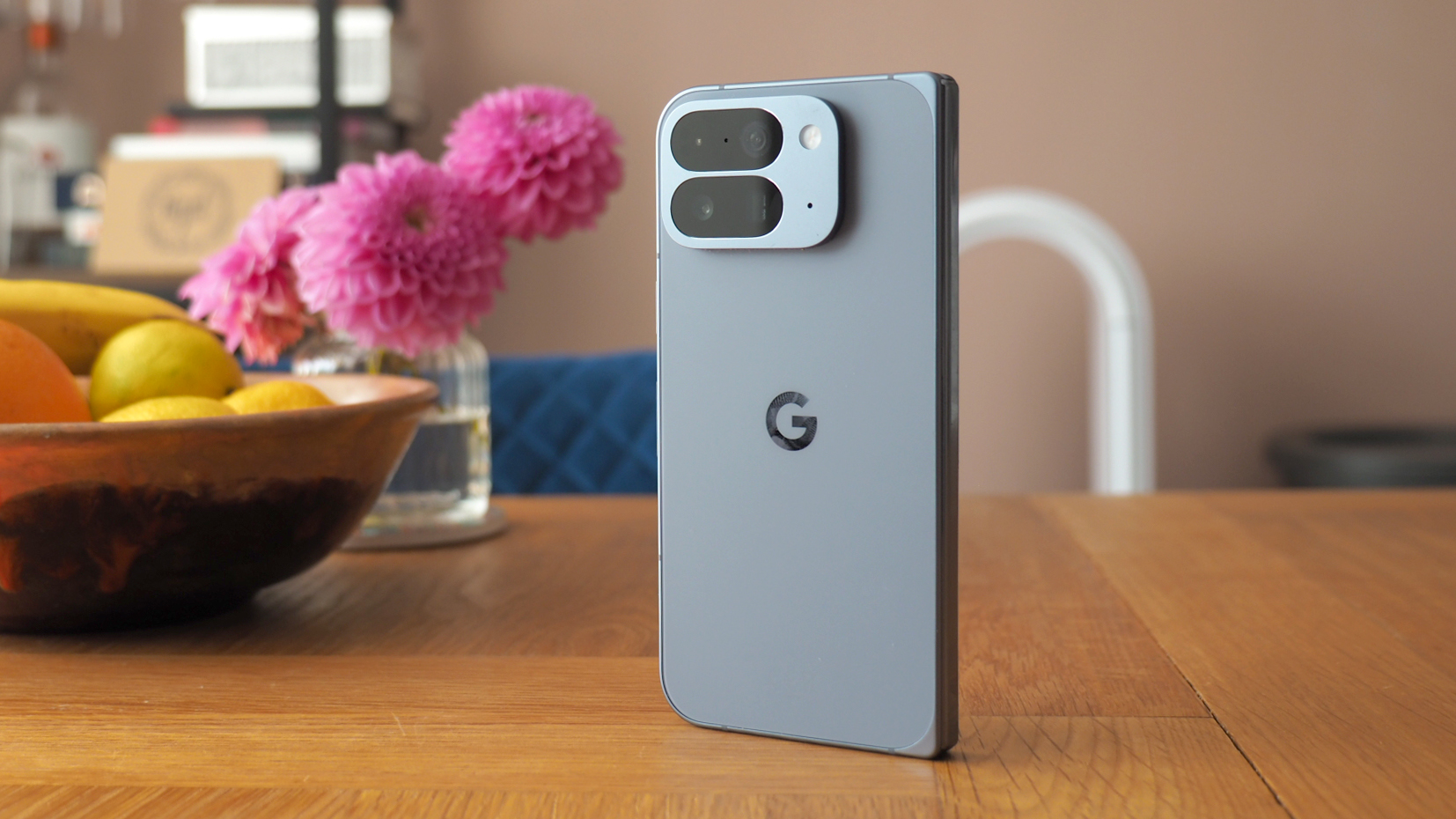
Google's path from folding phone zero to hero was abundantly clear in its last Fold product. For the Pixel 10 Pro Fold update, however, it's nips and tucks that elevate that previous success rather than reinvent it. More battery, brighter screens, less front bezel and better charging are the key takeaways here. But, unless you're fixed on having a wide front display, as you'll find here, the advances from Samsung's Galaxy Fold 7 are hard to ignore. The foldables world has moved on at pace, while Google hasn't quite kept up.
-
+
Ideal if you want a wide front display from your folding phone
-
+
Internal display remains joint-biggest on market
-
+
Decent battery life and overall performance
-
-
Only marginally different to predecessor – when the folding phone world has moved on
-
-
Cameras really ought to be upgraded by now
-
-
Auto-brightness remains overkeen
Why you can trust T3
When Google first entered the world of folding phones, it was, quite frankly, a disappointment. But a surprise move saw Google's second-gen foldable reimagination rise to the top of the stack as the best folding phone upon its release.
I was excited, therefore, to get my mitts on the brand's third-gen foldable, the Pixel 10 Pro Fold, to see whether that story continues. I've been using the big-screen folding phone for a full week for this review, to get a real feel of the device as if my own.
However, given the significant similarities between the Pixel 10 Pro Fold and its 9 Pro Fold predecessor, not to mention Samsung's sudden rise with the mighty impressive Galaxy Z Fold 7, I have been left pondering whether Google should have taken a leaf out of OnePlus' book and delayed for the sake of further development and differentiation.
While I know the Google Pixel 10 Pro Fold is still a great foldable handset, I also know – through experience of using many, including Honor's Magic V5 – that the key competition has come on in leaps and bounds. So is the latest folding Pixel phone worth buying?
Price & Availability
There's no getting around it: folding phones are expensive. That's because they're at the cutting edge of technology right now. It's more about context in how one sits against another, though – and in that regard, the Pixel 10 Pro Fold sees no price rise over its predecessor.
With a £1749 / $1799 / €1899 / AU$2,699 asking price at launch (for the 256GB model; the 512GB and 1TB options are yet more), the Pixel 10 Pro Fold is actually lower than Samsung's Galaxy Z Fold 7 on-sale asking price, but marginally pricier than Honor's Magic V5 (albeit only by a whisker in both instances).
What's New?
- Front display reduces bezel by hinge side, is 6.4in (up from 6.3in)
- Less resolute (408ppi v 422ppi of last-gen model)
- Both front and folding displays are brighter
- Larger battery (5015mAh v 4650mAh)
- Adds dust resistance (IP68 v IPX8)
- New colours: Moonstone / Jade
- Qi2 wireless charging (to 15W)
- Latest Tensor G5 processor
- 1TB storage option
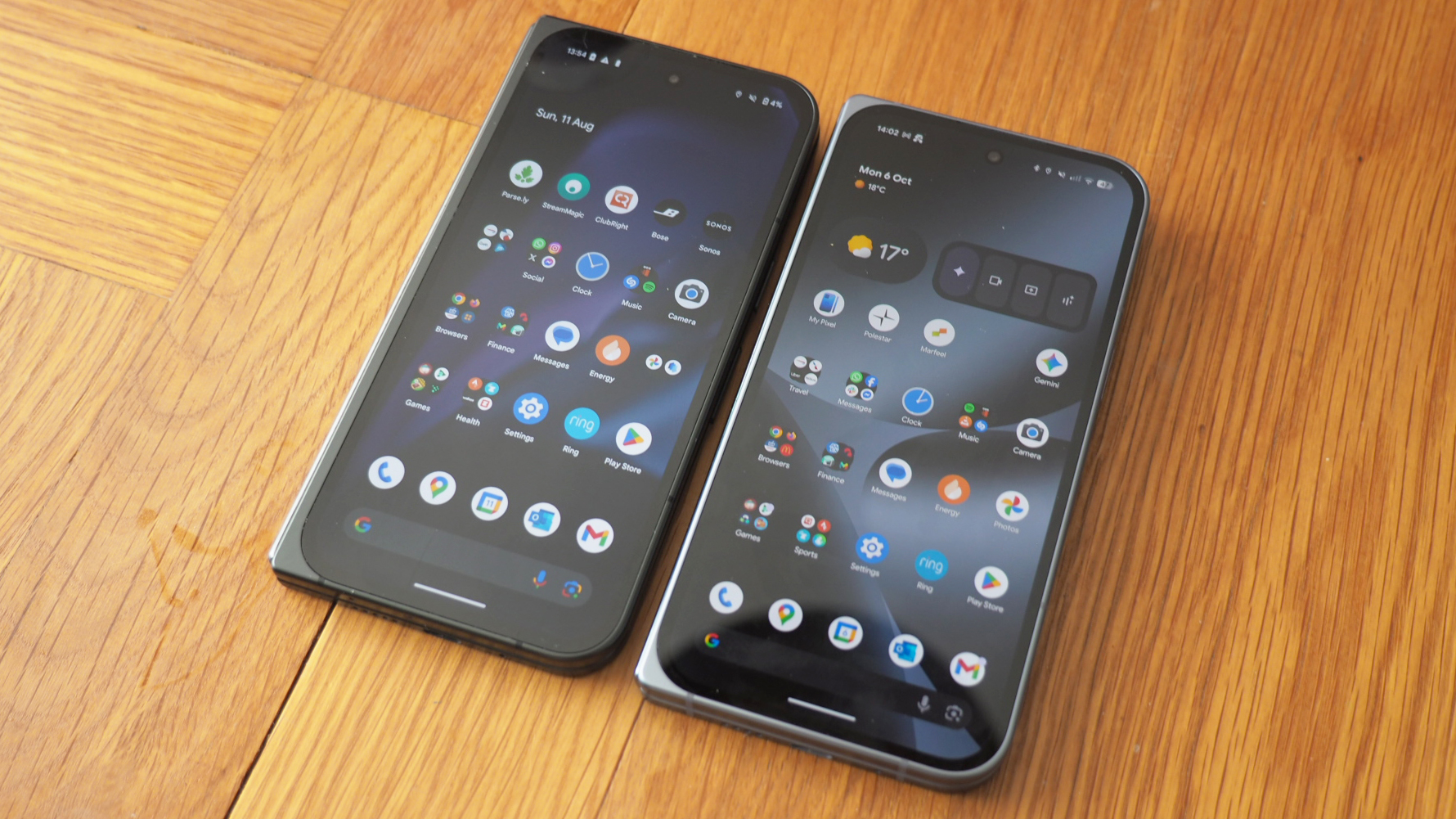
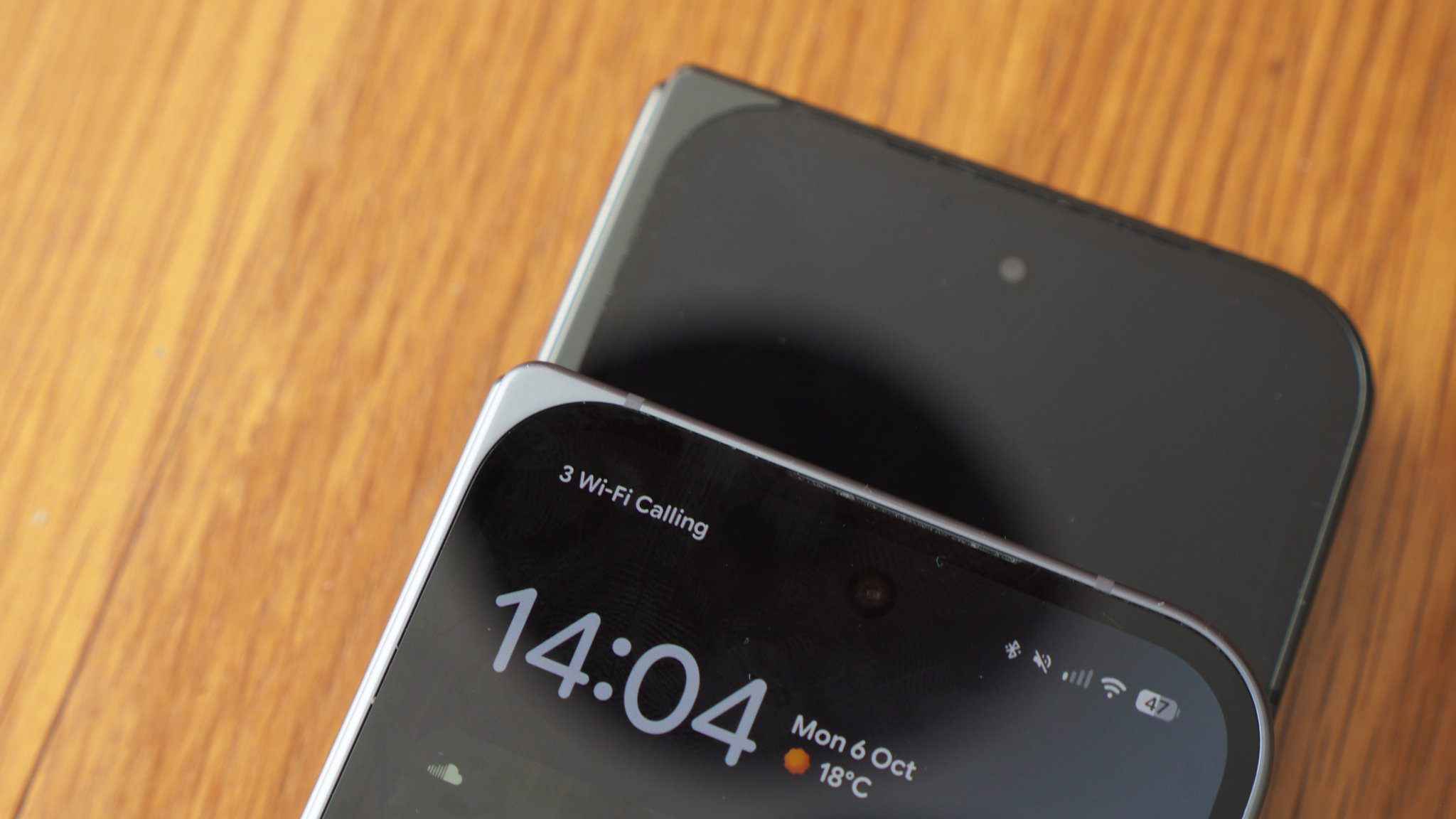
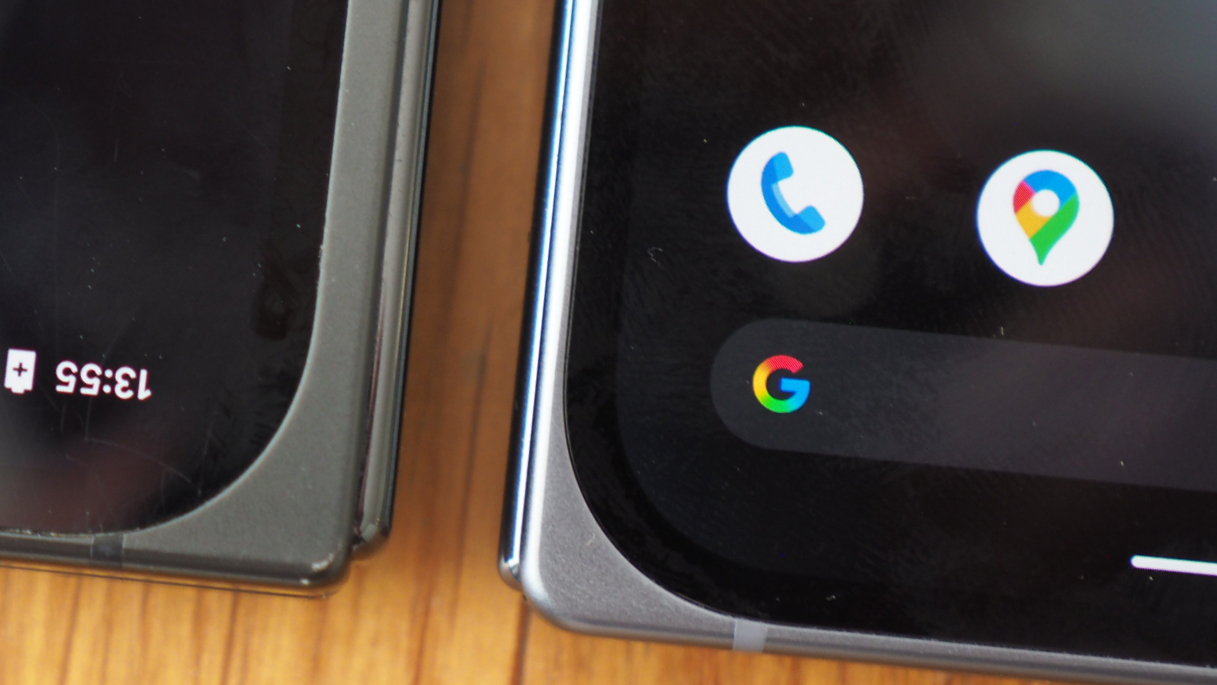
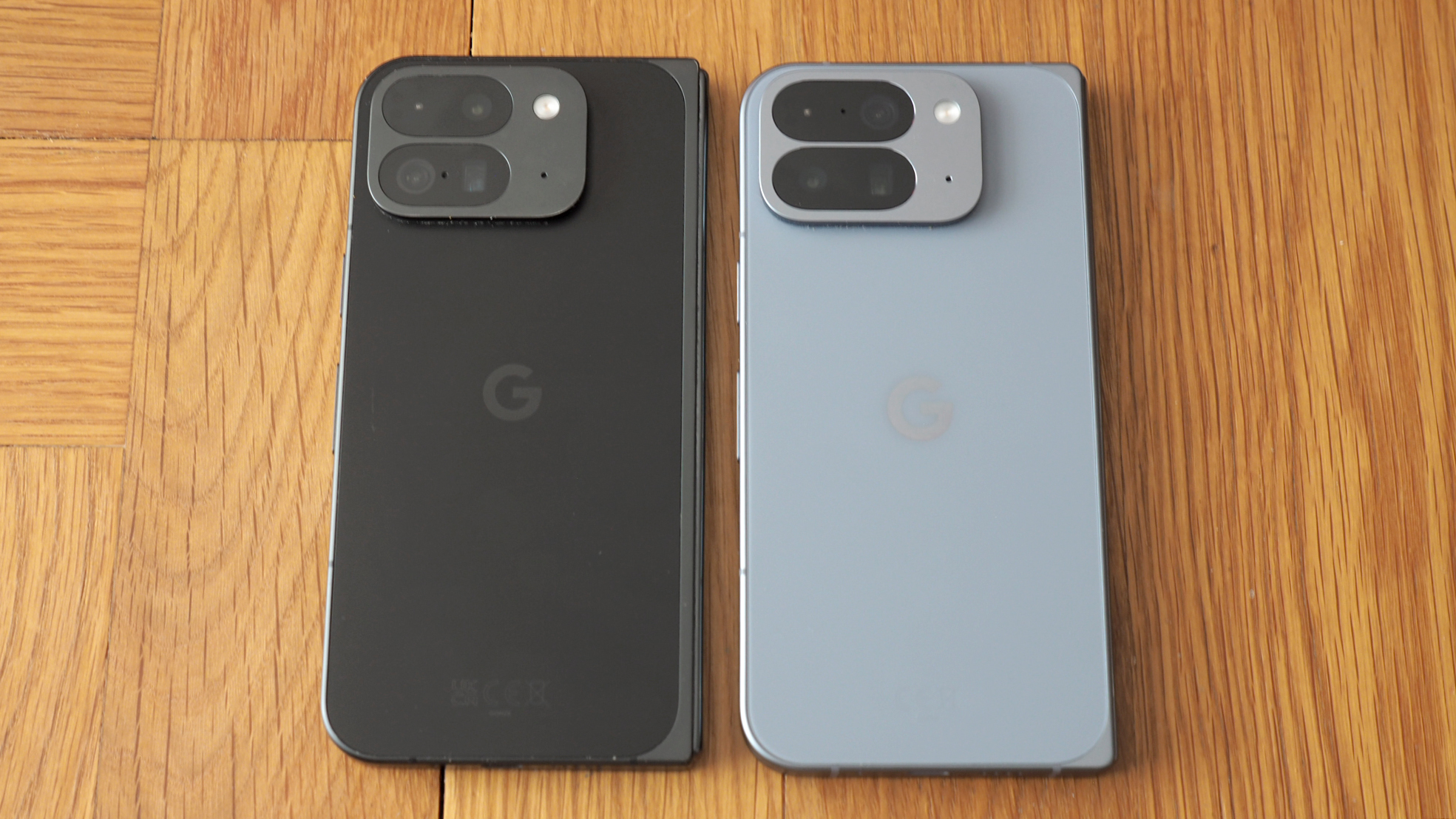
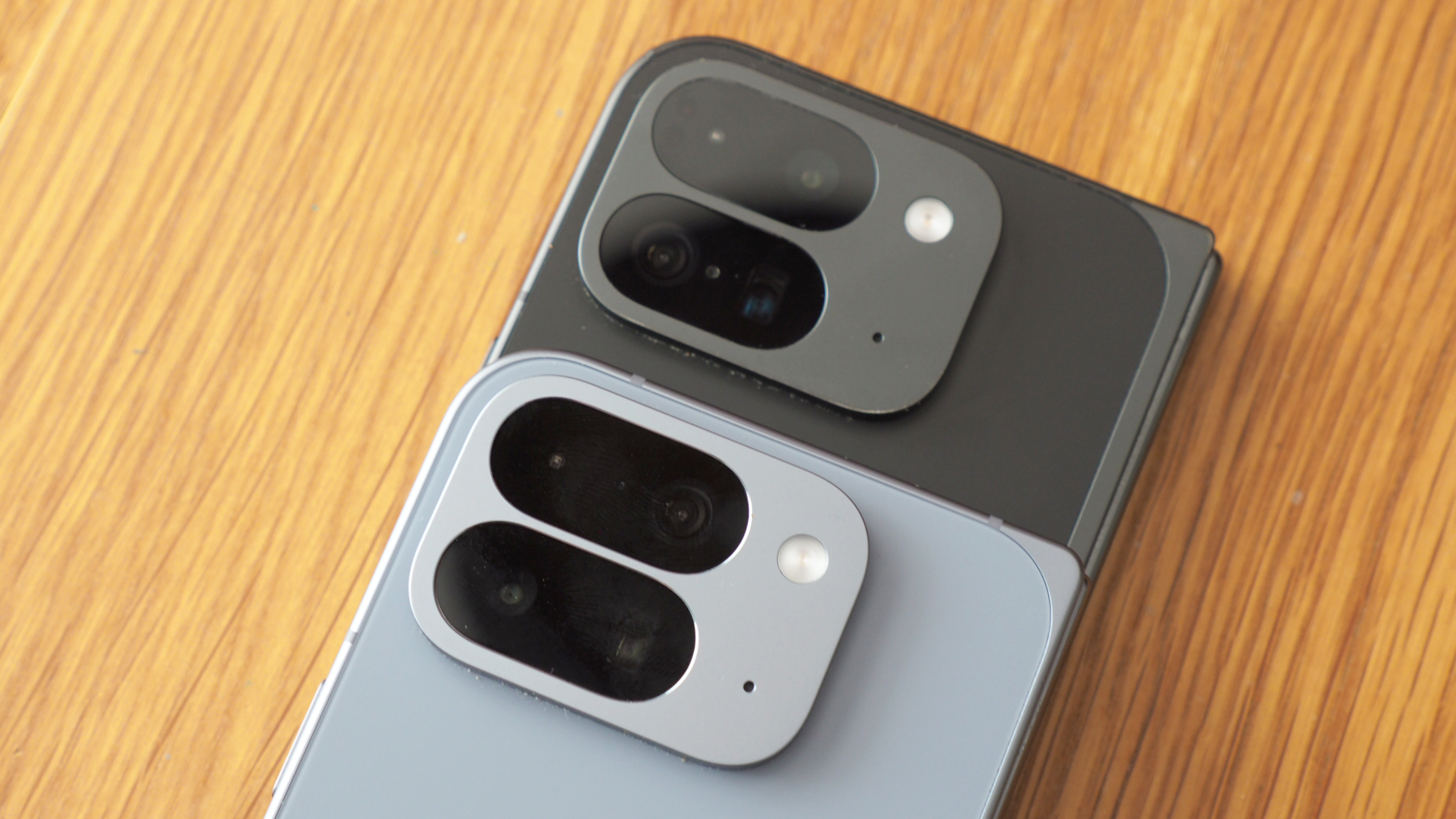
I possess both the Google Pixel 9 Pro Fold and the new Pixel 10 Pro Fold, so I've been able to position them side-by-side for a proper comparison about what's new.
Get all the latest news, reviews, deals and buying guides on gorgeous tech, home and active products from the T3 experts
As you can see from my listing highlights, above, the simple answer is 'not a lot'. Google has made some nips and tucks here and there, changing the footprint by such a tiny amount that I literally can't tell.
The key changes, subtle as they are, are the reduction in front bezel, increase in battery capacity and screen brightness, addition of Qi2 wireless compatibility, and two new colours (there's no 'classic' black or white finish this time).
Design & Displays
- Aerospace-grade aluminium frame
- Exterior display:
- 6.4-inch Actua (OLED) panel, 20:9 aspect ratio
- Corning Gorilla Glass Victus 2 protection
- 1080 x 2364 resolution (408ppi)
- 60-120Hz adaptive refresh rate
- To 2000 nits, 3000 nits peak
- Internal display:
- 8-inch Super Actua (OLED) panel
- 2076 x 2152 resolution (373ppi)
- 1-120Hz variable refresh rate
- To 1800 nits, 3000 nits peak
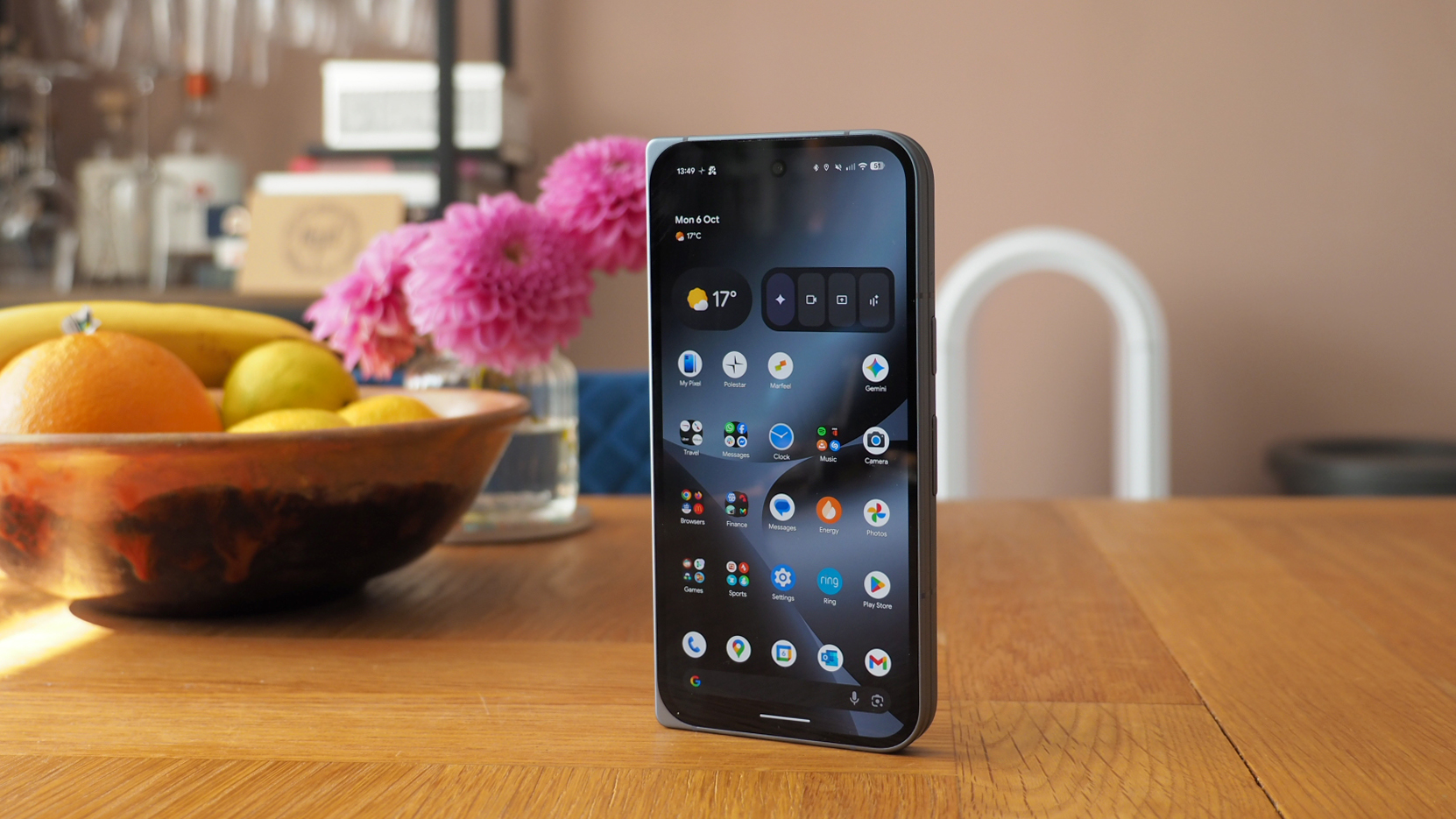
One of the Pixel 10 Pro Fold's big sells is that its front display is a 20:9 aspect ratio, so it's not a million miles away from one of the best typical Android phones in that regard. All folded up, it feels almost like a regular handset.
I can certainly commend the work that's gone into reducing the metal edge toward the hinge for this new design, too, as that's been squashed almost completely to allow the screen to breathe more. However, the metal curved edges, into which the screen sits, do still appear pronounced – especially in the Moonstone finish of my review sample.
I think the Samsung Galaxy Z Fold 7's front display is better implemented into its design, without any such curved excesses, but it's also a much narrower panel – which not everyone is going to prefer. For some, this will still make the Google the winner, aesthetics aside.
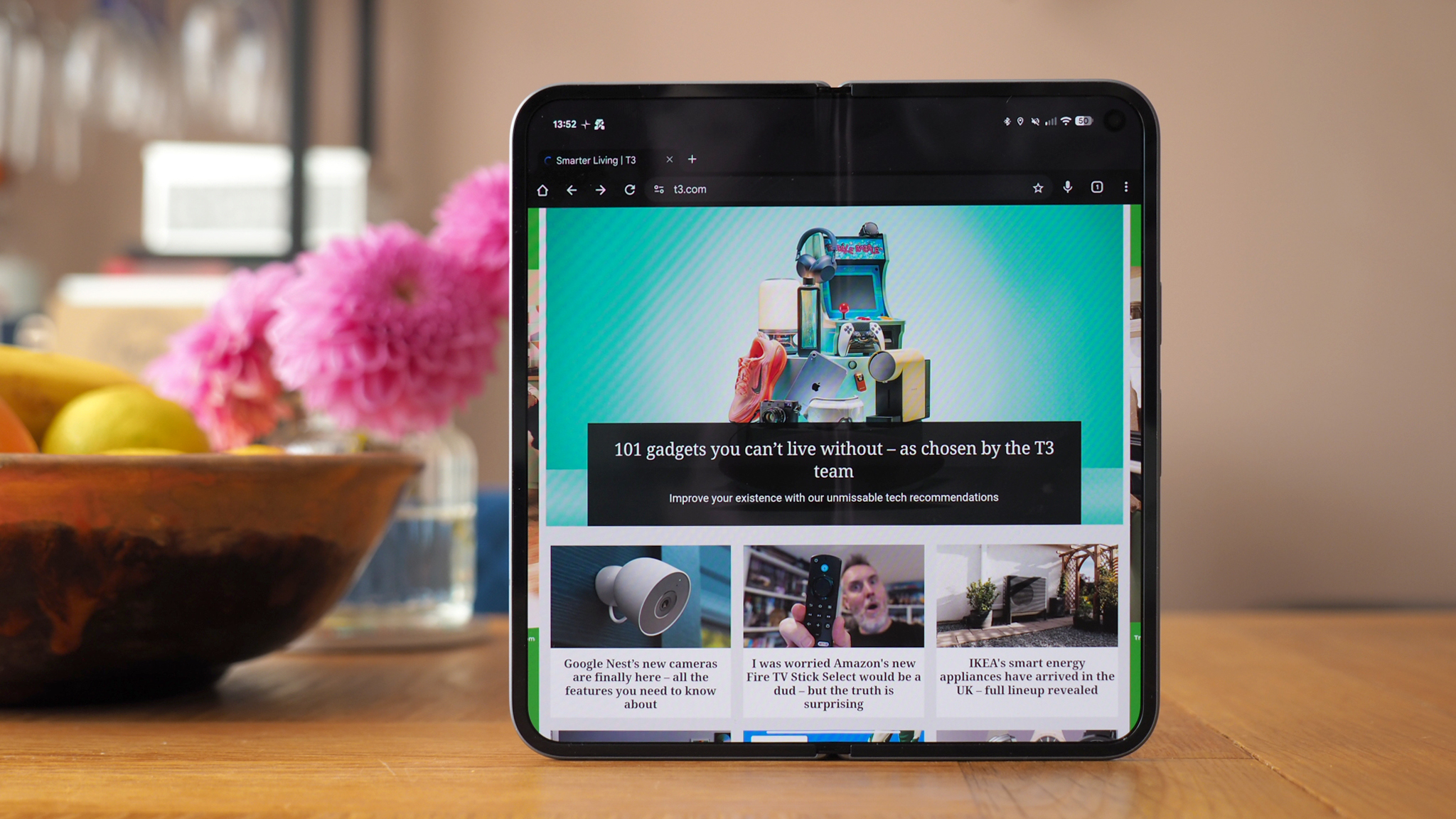
Unfold the Pixel 10 Pro Fold and it presents its massive 8-inch panel within, which is almost a square format in aspect ratio. While this remains akin to the IMAX of foldable phone displays, the competition has now also caught up – Samsung's Galaxy Z Fold 7 display is also an 8-inch diagonal measure.
Prior to using this new Google foldable, I had been using the super Pixel 10 Pro XL, which doesn't feel hugely different to a folded 10 Pro Fold. They're only marginally different in weight and scale, so there's not a giant compromise in shifting from standard to foldable – especially with the battery enhancement on this newer-gen model.
As I'd stated in my previous Pixel foldable review, however, I do find there's often a question mark over when you'll actually use the internal display. Because the Pixel 10 Pro Fold's external 6.4-inch panel feels so 'normal', quite often I've just failed to open the massive panel within. And a near-square aspect ratio isn't always useful for enhancing apps.
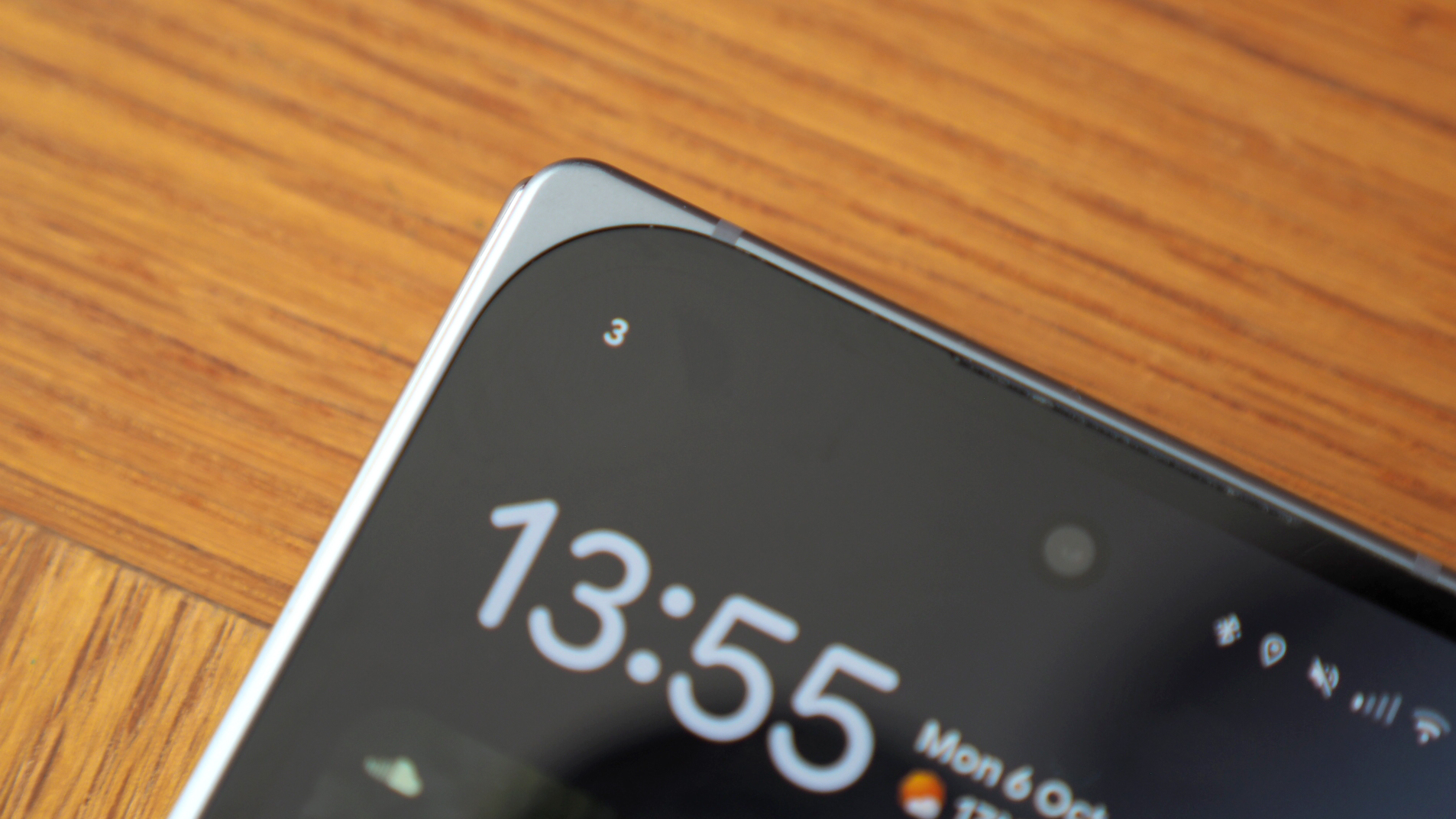
As with any folding phone, however, there's no mitigating the 'crease' that's subtly present on that main display, nor the reflective qualities of such a panel. That's just part of foldable life right now, and an issue that all makers have in this product category.
Note: there's also no stylus compatibility here, as is also the case with Samsung's latest Z Fold (it removed the feature), so if you thought sketching and note-taking on that big internal display was going to be an upsell, then I'm afraid that's not the case.
Performance & Battery
- Google Tensor G5 processor, 16GB RAM
- 52000mAh battery capacity
- 39W wired (maximum)
- 15W wireless (Qi2)
- Android 16 with Material 3 Expressive
- Google AI Pro free for 12 months
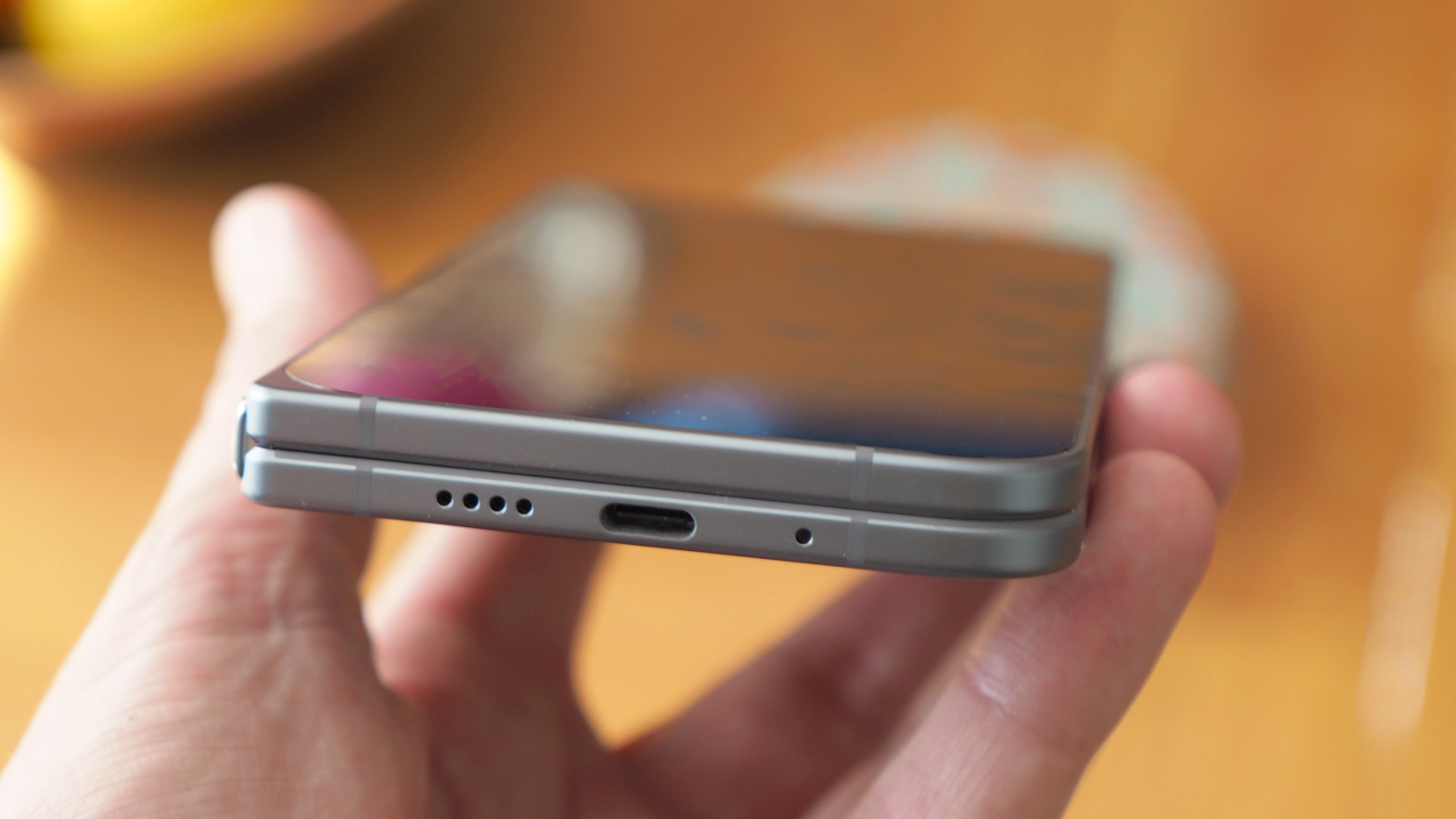
Like the Pixel 10 Pro XL, the 10 Pro Fold brings Google's most advanced processor yet, the Tensor G5. It's a decent chip, which runs generally cooler than its predecessor, though last-gen CPU cores aren't going to compete with Qualcomm's latest Snapdragon 8 Elite Gen 5 (or even the current Snapdragon chip) when it comes to raw benchmarks.
However, just as I said in my XL review, benchmarks don't equate to user experience – and in my week of testing I've not run into any problems. The Pixel isn't as wafer-thin as the latest Samsung or Honor competitor, so it can handle cooling better thanks to a vapour chamber – and while it does get warm (especially when recharging), it's never got wildly hot.
All that power does need to be kept in check, though, and Google's favourite 'trick' for this – aside from some inevitable throttling – seems to be overzealous auto-brightness and screen time-out timing. I get that it's to save battery life, but with some of the brightest screens around, this aversion to allowing sensible levels of brightness is one of my main bugbears about this device (and, it seems, all Pixel handsets).
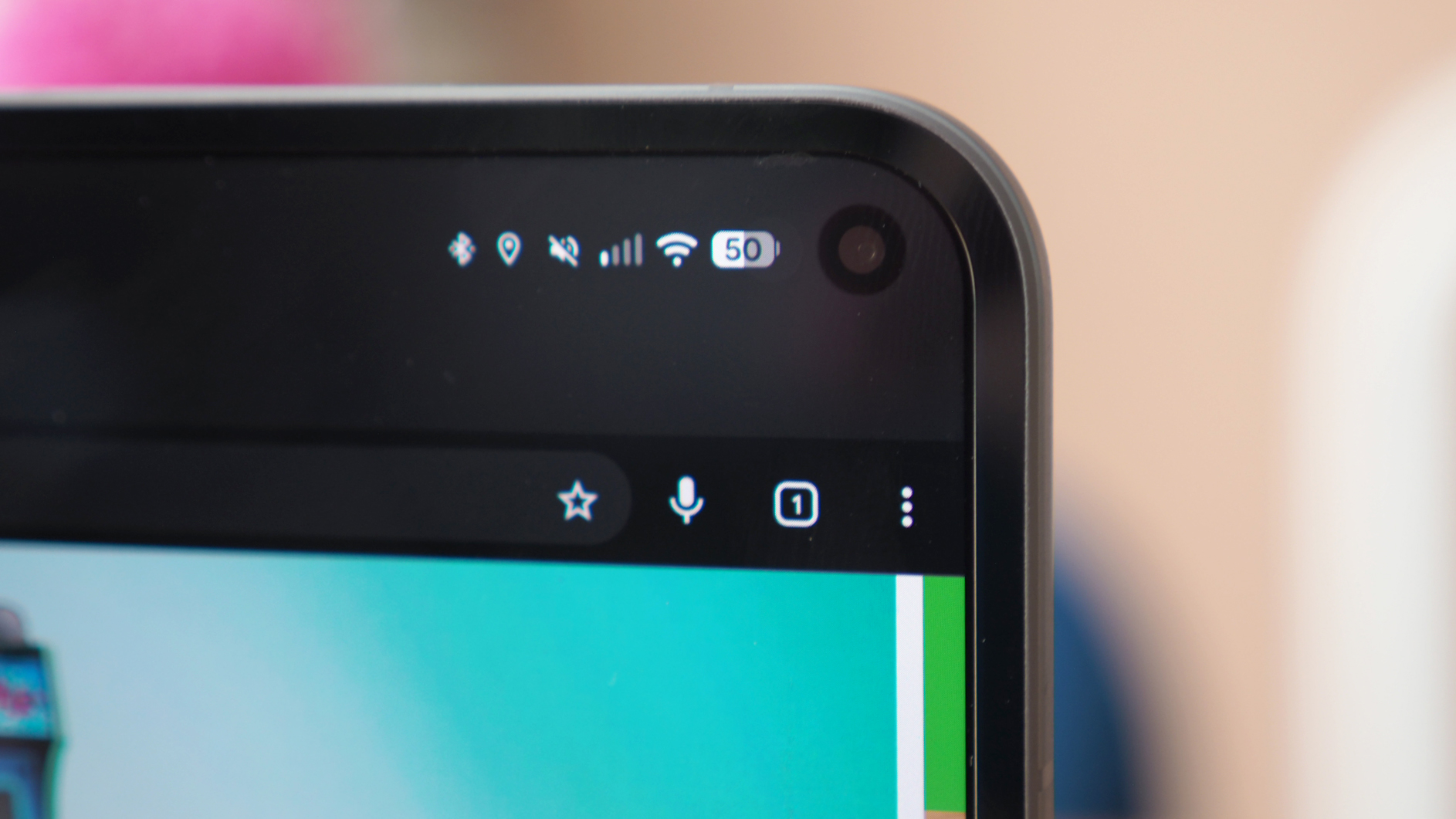
The resulting battery life per charge is pretty decent, though, which isn't something you can say for all foldables. I've not felt as though the 7.5% battery capacity increase has delivered a particularly different longevity compared to its predecessor, though, but 18-hour days are no problem. The caveat is you won't achieve that in the first few days of use, as it takes a while for everything to sink in.
I play plenty of mobile games in the evenings, so those innings per charge aren't based on scaled-back use. Whether you want to play South Park: Phone Destroyer or PUBG Mobile for a few dozen minutes or a couple of hours, the performance feels suitably flagship, yet balanced in its approach.
The charging speed has also been increased this time around, with a (not supplied) 30W charger ('USB-C PPS or higher' – as stated on Google's official spec) able to hit such speeds, slightly more if you have Google's 45W plug.
While that can refill 50% of the battery in half an hour, you'll want to take note of Google's Battery Health feature, which slows charging over time – and, indeed, savvily on overnight charging cycles based on your wake-up time – to aid battery life over months and years.
Software
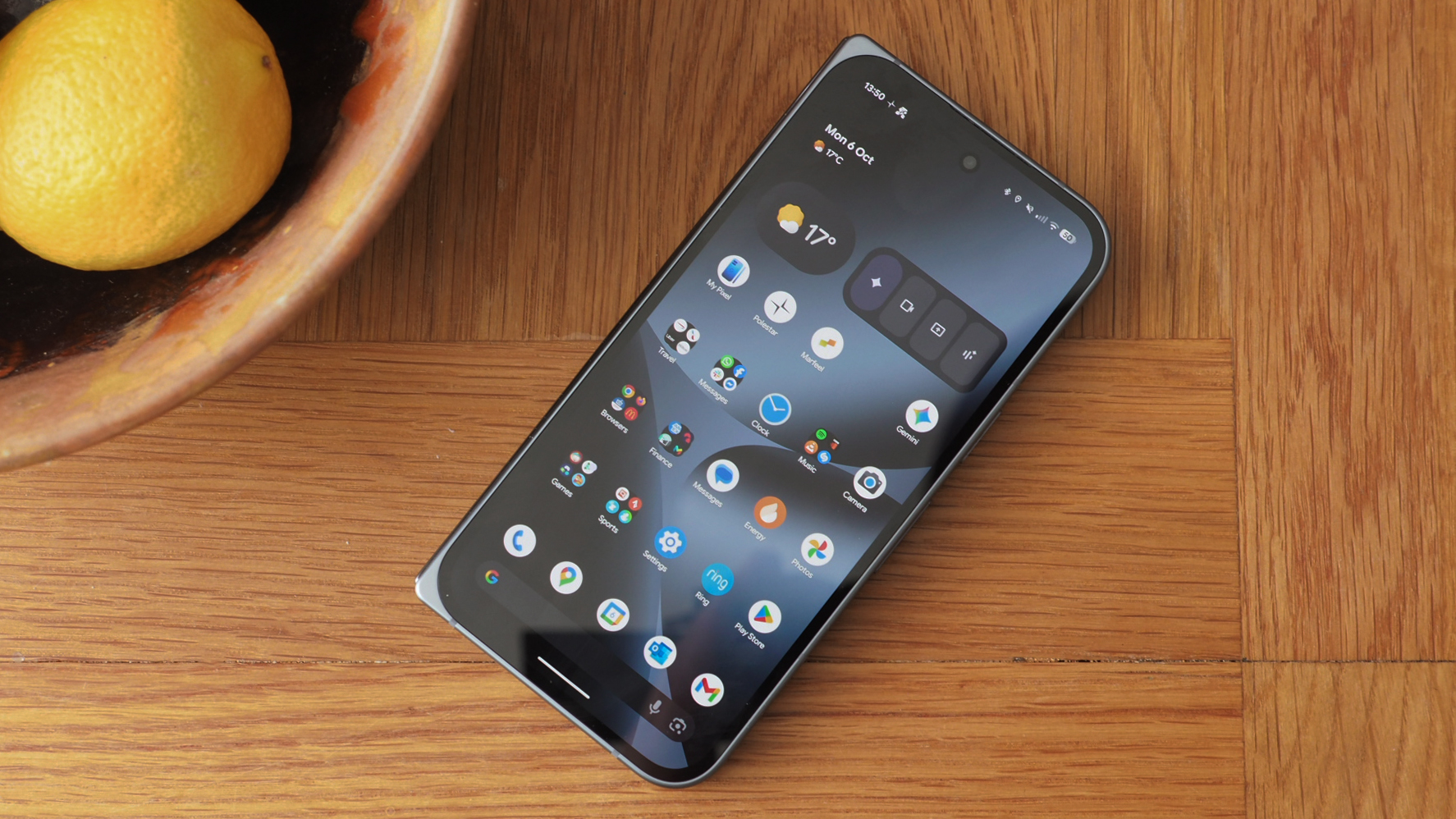
The Google Pixel 10 Pro Fold ships with Android 16 and, as a major part of that, delivers the visual aesthetic that Google likes to call 'Material 3 Expressive'. In short, this is how you customise the look and feel of the software, from colour palettes and icons, to typography and cut-out images on your Lock Screen. I love the smaller-scale icon and text size, which looks really smart.
Buying a Pixel 10 Pro Fold will also deliver a year's subscription to Google's AI Pro, for access to the more advanced Gemini 2.5 Pro model – which brings Gemini AI to Google Docs and more – and opens up 2TB storage in Google Drive. I wouldn't pay for this subscription for the AI aspect alone – I mean, it's extortionate, at £18.99/$19.99 per month – but the storage is an essential for me.
Google's advancement in AI defines what the company is all about right now. There are good and bad aspects to it – the death of search and attack on publishing models, in case of the latter – but Gemini's use is only going to expand. It's still got a long way to go, though, as summaries built from regurgitated portions of articles is less useful than, say, contextual aware search between apps. That on-hardware intelligence is slowly progressing, though.
Cameras
- Triple rear (with improved stabilisation (OIS)):
- Main (82°): 48-megapixel, f/1.7 aperture, 1/2in sensor, stabilisation (OIS)
- Wide (127°): 10.5MP, f/2.2, 1/3.4in, macro focus
- Tele (5x): 10.5MP, f/3.1, 1/3.2in, OIS
- Selfie (one front, one inner): 10MP, f/2.2
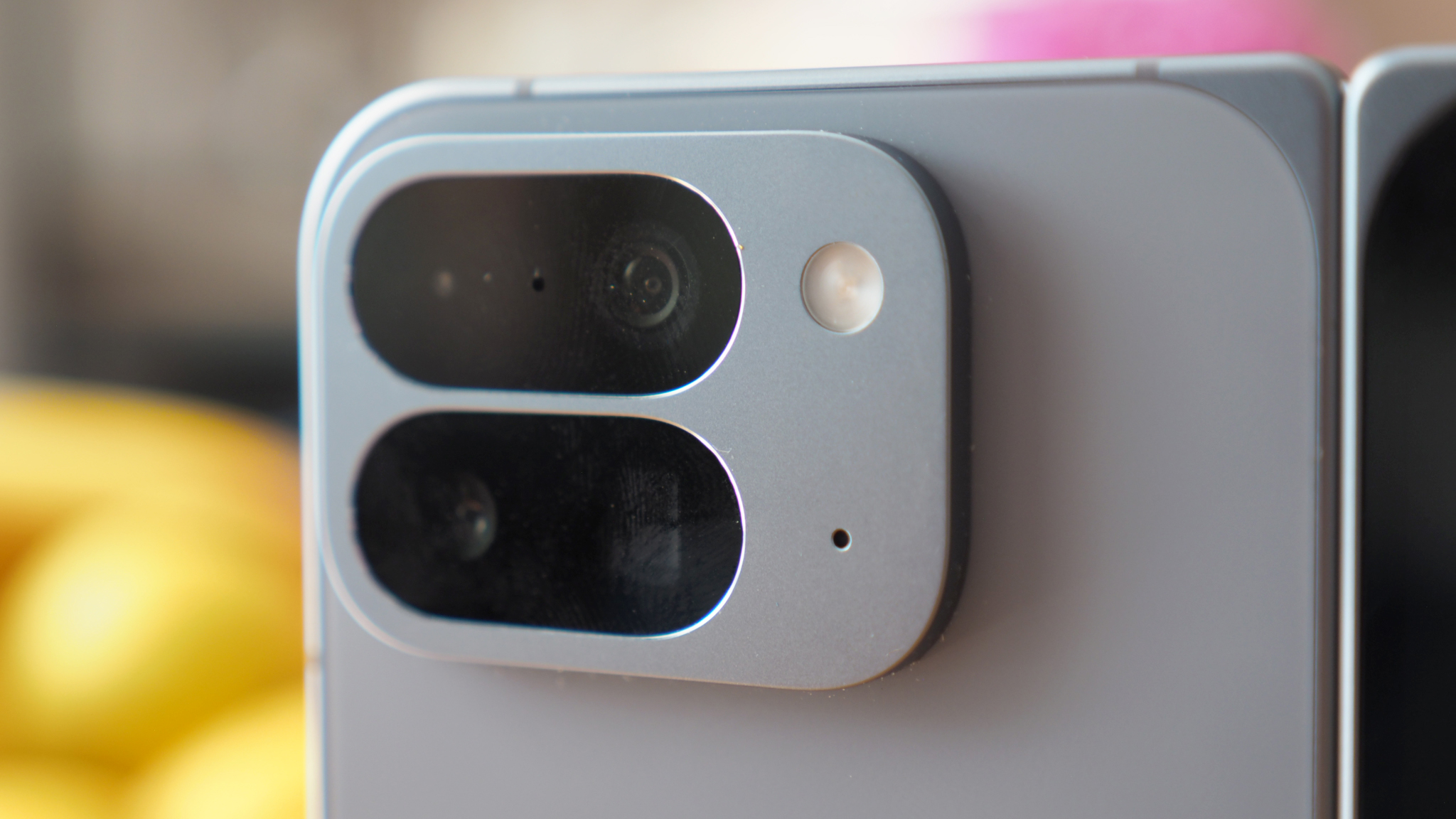
There are no differences between the Google Pixel 10 Pro Fold's cameras and its 9 Pro Fold's offering. They look the same, they act the same. But in the wider context of foldable devices, that's actually a pretty good thing.
It's also one of the areas where Google's push into AI shows some of its greater advancements. Features such as object removal or generative-fill to expand a scene are useful – although, as with all AI features, imperfect. Improvements will happen over time, I'm sure.
Put AI to the side for the moment, though, as that large-scale camera 'island' on the rear of this device isn't something that's easy to ignore. It's sure to divide opinion, as it's a big physical protrusion. I think it looks nicer on the Moonstone finish than it did on the last-gen colourways though.
Tucked within that island is a 48-megapixel main, 10.8MP 5x optical zoom, and 10.5MP wide-angle. This has been Google's go-to since the first Fold, so it's really due a change up, as an upgraded offering would have made a bigger impact here.
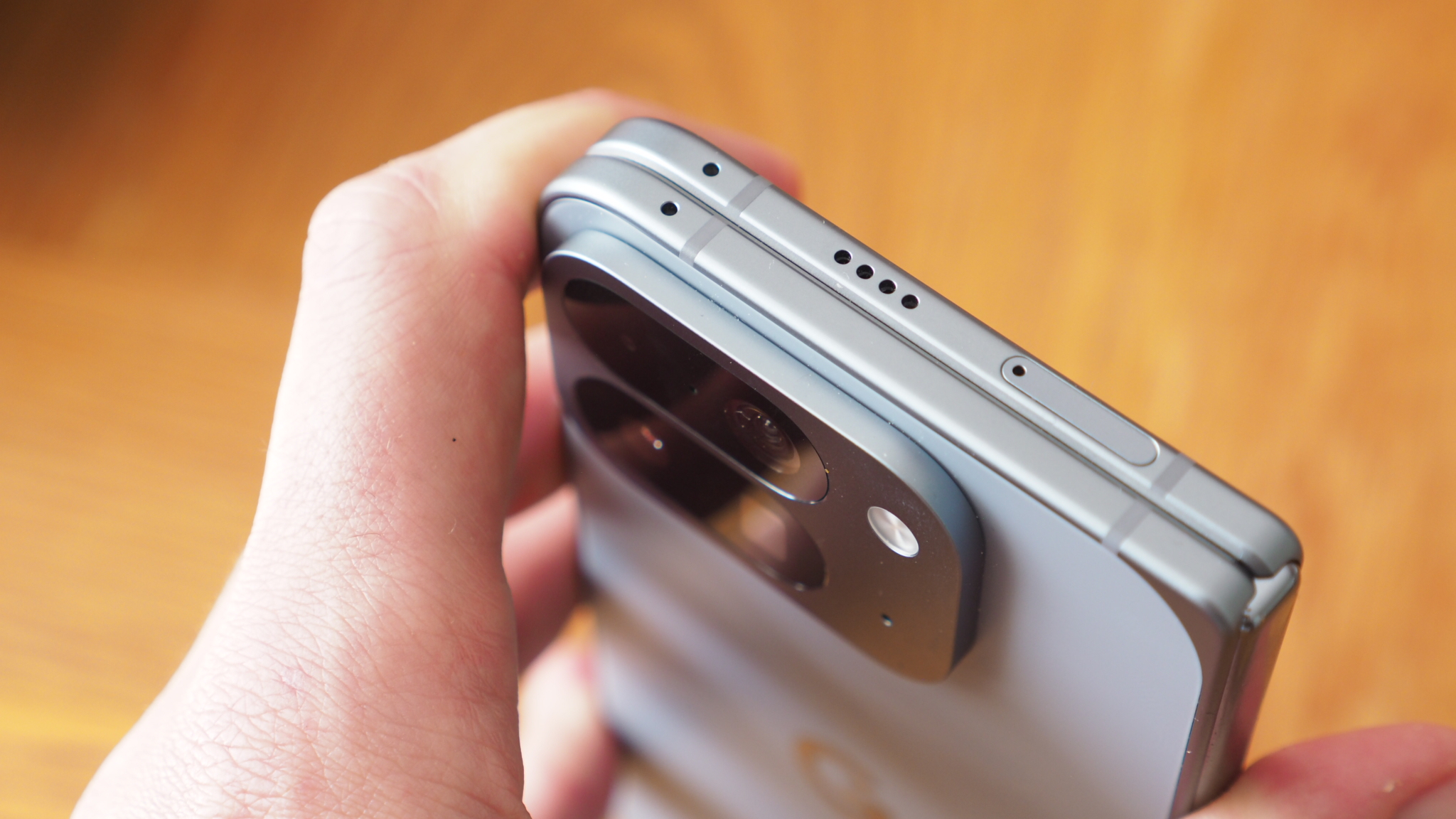
While the Pixel 10 Pro Fold's main camera is clearly the star of the show, given its resolution and detail, I've otherwise found the versatility of this camera system to be among its biggest appeals.
Whether shooting far-away subjects at 5x zoom – which I gave a go in the Royal Albert Hall during a gig – or going wide-angle and shooting handheld at night in such dimly-lit venues, the Pixel can handle it all. It relies on post-processing, which you can often see happen in real-time.
Other features raise the overall experience, too. From the optical image stabilisation (OIS) – which I could 'feel' activate to offset my hand movements – to the Night Sight mode for lifting night shots out of the shadows. There's plenty here that works in a simple 'point and click' way.
Google Pixel 10 Pro Fold review: Verdict
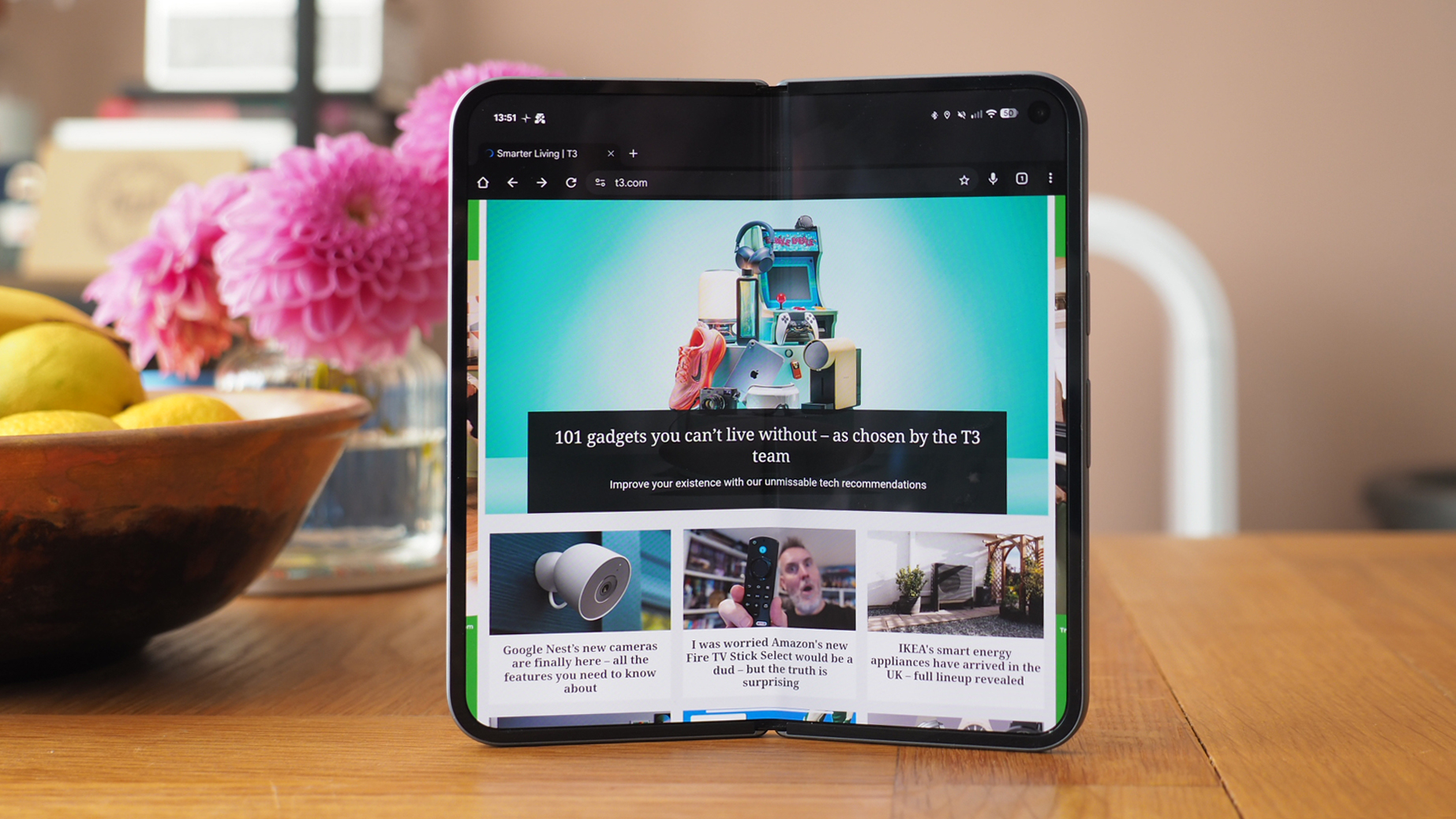
While I'm impressed with the Google Pixel 10 Pro Fold's overall offering, as its nips and tucks bring marginal gains over its predecessor, the key folding phone competitors have really put their foot on the gas during this past year.
As a result, a once 5-star potential product can't, in my view, compete with the current best in the business – Samsung's Galaxy Z Fold 7. Some will disagree, mind, as the Pixel's wider front display will seal the deal for some buyers – as the Samsung's is so much narrower that it's a very different experience.
Google's foldable journey has been impressive: the original Fold really didn't hit the mark, while the second-gen model was a total reinvention that blew everyone away. The Pixel 10 Pro Fold hits plenty of high notes, but for its future to be secured it's going to need to slim down further and refine the screen bezel yet more. Then Google will be back to top once more.
Also consider
As said in this review: folding phones are pricey! Given the Pixel 10 Pro Fold's similarities to its predecessor, if you can find a 9 Pro Fold on a better deal then it's an obvious consideration.
Otherwise, the hottest foldable right now is Samsung's Galaxy Z Fold 7, which is super-thin, super-powerful, and has elevated the design to another level. So long as you can handle that narrow front display, of course.
Honor's Magic V5 is a similar play to Samsung's offering, should that appeal – but I find its software is just a bit too fussy.
Follow T3.com on Google News to keep our latest news, insights, and features at the top of your feeds!

Mike is T3's Tech Editor. He's been writing about consumer technology for 15 years and his beat covers phones – of which he's seen hundreds of handsets over the years – laptops, gaming, TV & audio, and more. There's little consumer tech he's not had a hand at trying, and with extensive commissioning and editing experience, he knows the industry inside out. As the former Reviews Editor at Pocket-lint for 10 years where he furthered his knowledge and expertise, whilst writing about literally thousands of products, he's also provided work for publications such as Wired, The Guardian, Metro, and more.
You must confirm your public display name before commenting
Please logout and then login again, you will then be prompted to enter your display name.

